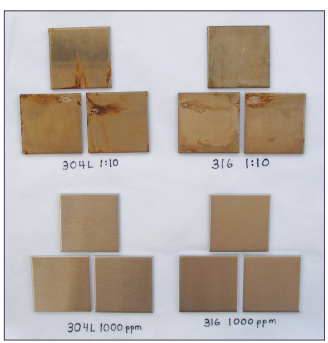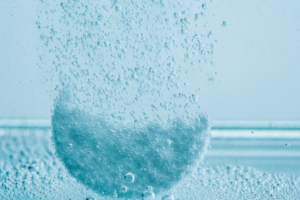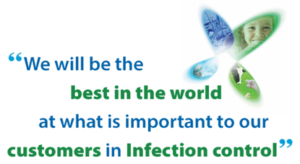In the high-stakes environment of a healthcare facility (HCF), infection control is not just a responsibility; it’s an absolute necessity. The use of disinfectants to maintain a hygienic environment is a routine practice, with bleach often standing out as a common choice. However, there’s a growing concern among healthcare professionals and facility managers about the corrosive impact of bleach on surfaces and equipment, as well as the potential risks for staff and patients. Our last blog reviewed the article “Are your stainless steel surfaces being corroded by repeated bleach use?” by Wendy Hollands and Jay Postlewaite. Read the full article here. Is there an effective alternative? We believe so! This is where Sodium Dichloroisocyanurate (NaDCC) tablets come into the conversation as a potential game-changer.
The Bleach Dilemma in Healthcare Facilities
Bleach, or sodium hypochlorite, is a powerful disinfectant that’s been used for decades to eliminate dangerous pathogens, including bacteria, viruses, and fungi. While its efficacy is well-documented, the corrosive properties of bleach are increasingly becoming a cause for concern.
Corrosive Damage: Continual use of bleach corrodes metal surfaces, damages equipment, and can lead to the deterioration of furnishings over time. The maintenance and replacement costs associated with this corrosion can be significant for healthcare facilities.



Health Risks: The fumes emitted from bleach solutions are known to irritate the eyes and skin. For healthcare workers who are repeatedly exposed to these fumes, this can potentially exacerbate respiratory conditions and cause discomfort, leading to increased sick days and decreased productivity.
Environmental Concerns: Bleach breaks down primarily into salt and water, but it can also produce traces of harmful byproducts when mixed with other cleaning agents or exposed to certain metals. These byproducts are harmful to the environment and may pose health risks.
Enter NaDCC: An Alternative with Promise
Sodium Dichloroisocyanurate (NaDCC) is emerging as a viable alternative to bleach. It’s a chlorine-based disinfectant that comes in tablet form, offering several advantages.
Less Corrosive: While NaDCC provides a chlorine solution, it is significantly less corrosive than traditional bleach, reducing the risk of damage to surfaces and equipment in healthcare facilities. This factor alone can translate into considerable savings on maintenance and replacements.
Safer for Staff and Patients: NaDCC tablets are designed to dissolve in water, producing a solution with stable pH levels. This stability means less irritation for staff and patients. When used correctly by following product label guidelines, the solution is less likely to cause skin and eye irritations compared to traditional bleach.
Convenience and Accuracy: The tablet form of NaDCC allows for precision in creating disinfectant solutions, as each tablet delivers a measured dose. This accuracy helps avoid the risks associated with over or under-dilution, ensuring effective infection control every time. Additionally, the compact nature of the tablets makes them convenient for storage and transport.
Environmental Impact: NaDCC has a favorable environmental profile. It degrades primarily into water, carbon dioxide, and less harmful salts, reducing the environmental burden often associated with bleach use.
Making the Switch: Is It Worth It?
The corrosive impact of bleach in healthcare settings is a valid concern, affecting not only infrastructure and equipment longevity but also staff health and environmental well-being. NaDCC presents a promising alternative that addresses many of these concerns, providing effective infection control without the accompanying drawbacks of traditional bleach. As healthcare facilities continue to seek optimal solutions for infection control, products like NaDCC offer a glimpse into a future where safety, efficacy, and care quality coexist seamlessly.
Considering the switch to using NaDCC tablets? As with all major decisions, thoroughly evaluate several factors before making the change. First, it’s important to understand the specific requirements of the facility. Next, consider the potential cost savings. Finally, focus on the anticipated improvements in health and safety standards. Kersia NaDCC effervescent cleaning and disinfecting tablets are known for the advantages they can bring to a healthcare facility, however, it’s vital to implement robust cleaning and disinfection processes and ensure they are continuously monitored. Additionally, staff must be properly trained on how to use any new disinfectants, and ongoing supervision is essential for success.
Remember, the choice of disinfectant should always align with regulatory guidelines and be based on thorough research and consultation with infection control experts. Ensure that the products you use are approved and fit for purpose by a governing authority.
Contact our infection prevention experts for more information on Kersia Healthcare products:
Dan Mueller Senior Vice President, N. American Sales
dan.mueller@kersia-group.com M/ 206 741 5981
Chris Butler Eastern Regional Sales Manager
chris.butler@kersia-group.com M/ 781-364-7320


